After discussing the dismal performance in human development, it is important to discuss expenditures on military in Pakistan. Not because the two have any relation. But because a discussion on structural economic issues should include geo-political context as well. Expenditures on military in Pakistan provide a nice history lesson on the country’s internal and external politics. The contrast with human development also gives a decent sense of where the country’s public policy priorities lay.
A global leader
While social spending has been constrained, Pakistan leads most countries in defense spending as a proportion of GDP. As we discussed last time, Pakistan spends 3.4% of GDP on health and education combined compared to 7.6% in other emerging economies.
Expenditure on military in Pakistan vs. global benchmarks
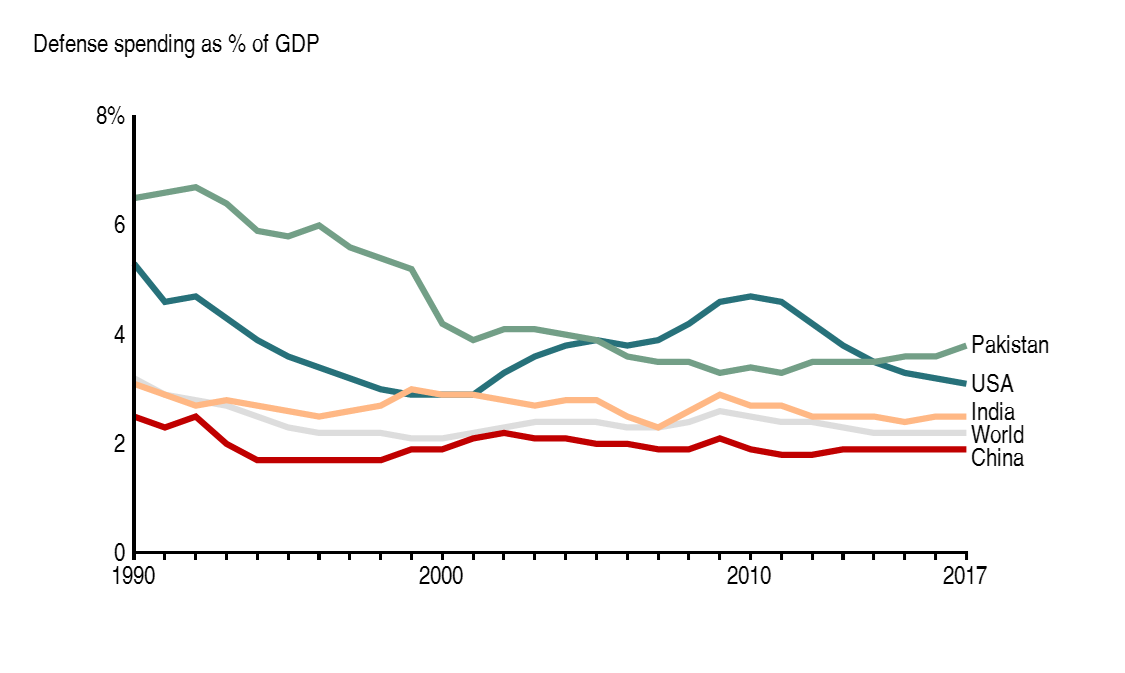
‘Military burden’ is usually measured as defense spending as a proportion of GDP. Pakistan’s military burden is actually one of the highest in the world. To be exact, it is the 9th highest according to the Stockholm International Peace Research Institute (SIPRI). Leading the pack are the oil-rich Gulf economies of Oman and Saudi Arabia. The chart above shows Pakistan leading the United States, India and China in defense spending as a proportion of GDP. It spends around 4% of GDP on its military compared to the global average of 2.2%. On a side note, isn’t it nice to finally say Pakistan spends more on something compared to the rest of the world? We will let you decide if it’s a good thing or not.
However, military burden is a very crude measure. The denominator of GDP is significant. Pakistan does not spend more than the United States on its military. In fact, the US spends over 70 times more. But because Pakistan’s GDP is relatively small, the military expenditures appear outsized. The burden would reduce if a country’s GDP grows faster than its military expenditures. If Pakistan has rapid real GDP growth and military expenditure increases based on inflation alone, the burden would fall each year.
Pensions are hidden
Another way to make the military burden appear smaller would be to underreport it. Pakistan deploys this tactic by reporting military pensions under the civilian budget and hence understating defense spending.
Expenditure on military in Pakistan with pensions (2014-20)
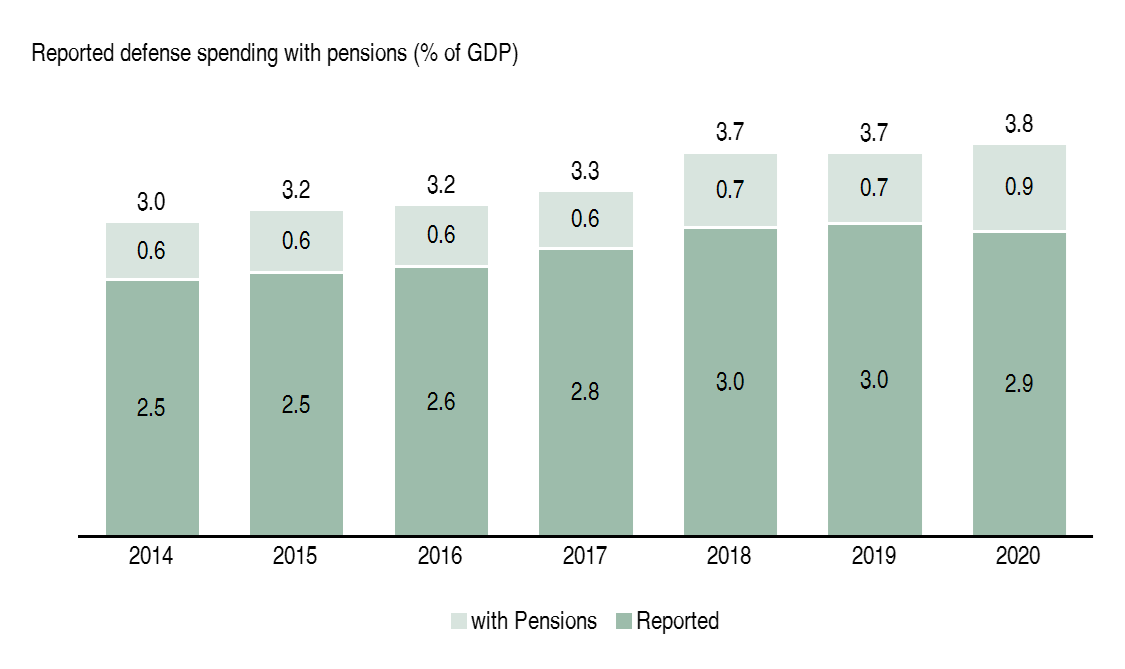
In 2000, when former army chief General Pervez Musharraf was ruling the country, it was decided that military pensions would be taken out of the defense budget and reported with civilian pensions. Macro Pakistani particularly enjoyed the explanation provided, when the issue was brought up in the Senate in 2015:
“The decision to charge the defense services pension to the civil estimates was made for the purpose of (having) one budget demand both for civil and defense pensions”
Defense Minister, Khawaja Muhammad Asif
Essentially no explanation was given for why almost 20% of expenditures on the military in Pakistan were not being reported as part of the defense budget. Under the Pakistan Economic Survey, defense expenditure is reported 3% of GDP in 2019. Only if you include the military pensions hidden under the civilian budget, will you get a complete picture of military spending in Pakistan. Reporting military pensions separately is not the norm. Pensions make up around 25% of India’s defense budget and are reported within the 2% of GDP that they report spending on their military.
Pensions are a problem
Public pensions for the military in Pakistan make up over 75% of the federal government’s pension expenditures. They have also been rising at over 16% annually since 2014.
Federal pension expenditure in Pakistan (2014-20)
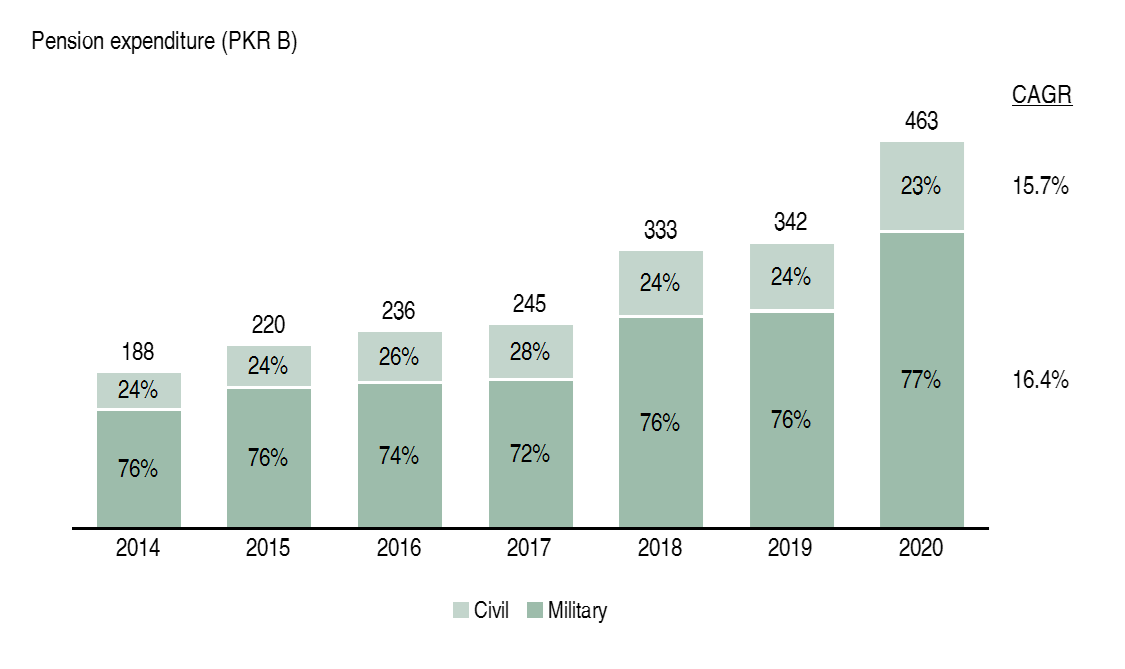
Expenditure on retired military personnel is more than thrice the amount spent on retired federal government employees. What is worse is that these pensions are unfunded. There is currently no provision by the state to finance future pension liabilities. In other parts of the world, pensions are paid out of a fund that the employee and the employer contribute to during time of employment. The fund is invested across a range of capital market instruments to generate returns. These returns then benefit the employee post retirement. Macro Pakistani will do a complete deep dive on public pensions later but if you want to explore the current broader issue, you can do so here.
Save the people
So why exactly does the military in Pakistan need so much money? Since most will cite neighboring India as a concern, a side-by-side analysis would help. India is a larger country with almost seven times the population. It also spends seven times more on its military. While Pakistan spends around USD 10 billion on defense, India now spends more than USD 70 billion. It has increased per capita spend twice as fast as Pakistan, with both countries competing in the name of national security.
Expenditure per capita on military in Pakistan vs. India (2000-17)
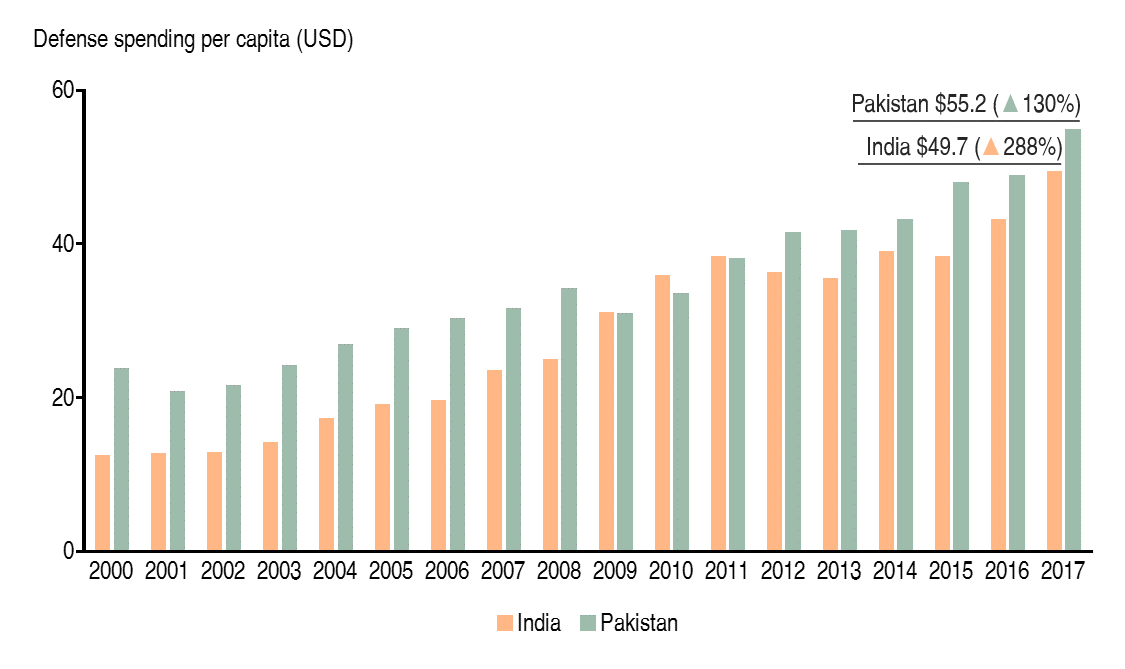
On a per capita basis, Pakistan spends USD 55.2 on each citizen’s defense while India spends USD 49.7. For much of history though, Pakistan spent more. India’s military burden did not change much even as its per capita spend increased. Faster economic growth allowed it to allocate a higher budget to its military without increasing the proportion of GDP attributed to it. Civil-military relations and deciding how much of the GDP should be allocated to the military are outside the purview of this platform. However, what is clear is that Pakistan spends an outsized amount on defense. NATO’s defense investment guideline is at 2% of GDP for those looking for a benchmark. Economic growth can allow Pakistan to continue to spend the same nominal amount on defense while reducing military burden. It can also help the country allocate more funds toward improving human development outcomes we have discussed before.
We need arms
Apart from spending on personnel and their pensions, both India and Pakistan have also invested heavily in importing military equipment. India has continued to invest while Pakistan’s arms imports peaked in 2010.
Arms imports in Pakistan vs. India
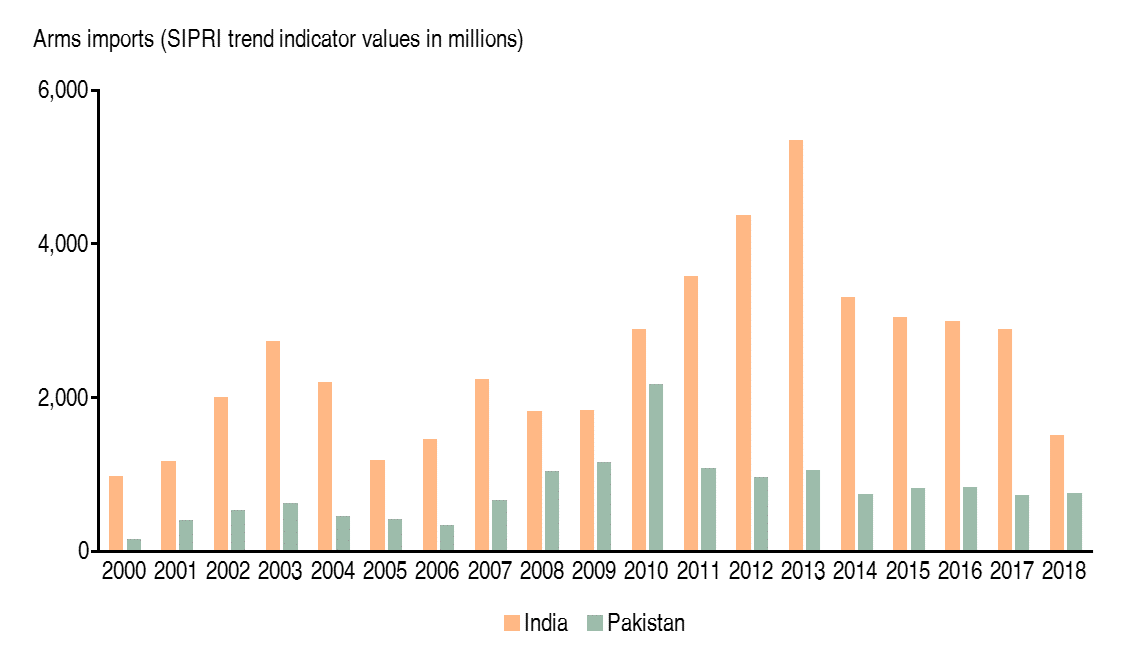
Arms and ammunition are required to sustain military forces on both sides. On average, India’s military forces are three times the size of Pakistan’s and its import of arms is too. However, what is interesting is the variation across years rather than the average. From 2001 to 2010, the ratio of arms imports for India and Pakistan fell from 2.8x to 1.3x. From importing almost three times fewer arms than India, Pakistan started importing almost as much ammunition as a country seven times its size. This happened due to influx of funds from the United States after the 9/11 tragedy as part of the War on Terror.
After the capture of Osama Bin Laden and the killing of 24 Pakistani soldiers during a NATO military raid, US-Pakistan relations deteriorated and the funds dried up. Since independence, Pakistan has received over USD 30 billion in direct aid from the United States. About half of this was for military assistance and more than two-thirds was disbursed post 9/11. If you scroll back up to the first chart and see when Pakistan’s military expenditure started falling and the same for when the United States’ started increasing, you will see that it happened around 2001. After that, the US started a Coalition Support Fund as part of the War on Terror, of which Pakistan was a major benefactor.
We need the US
History of US aid to Pakistan is fascinating. After independence, US support piled in but it was not until 1962, during military rule, that Pakistan received its highest annual assistance package of USD 2.8 billion. During the 1960s, an average of USD 1.7 billion was disbursed each year with only 10% going toward military assistance. The decade after was not as rosy, as President Carter suspended almost all military aid due to Pakistan’s nuclear program initiation. However, that excuse dried up as attention switched to garnering support for the Cold War during General Zia’s tenure, after which President Bush suspended aid again in the 1990s.
US military and economic aid to Pakistan (1950s-2010)
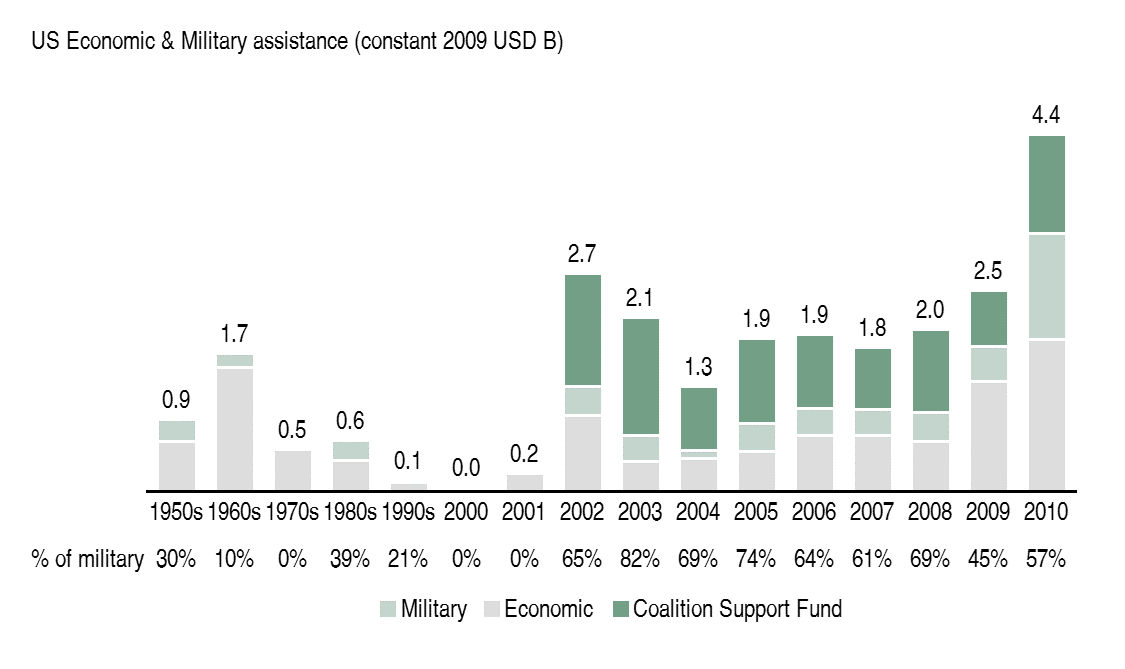
Pakistan became relevant again in the 2000s: third such instance during military rule. Coalition Support Fund was designed as a reimbursement mechanism, whereby Pakistan had to spend the amount first on the War on Terror and then seek reimbursement. However, direct military and economic aid also continued while relations between the two countries prospered. From that peak, US aid disbursements dropped to around USD 350 million in 2019. According to the State Bank of Pakistan, the War on Terror cost us USD 118 billion in direct and indirect losses till 2016.
Even with the new preferred partner of China, military is at the forefront. Several military projects are included in the China Pakistan Economic Corridor (CPEC), such as a new special economic zone to produce a new generation of fighter jets. The fact that the Chairman of the CPEC authority is also ex-military should show you how closely Pakistan’s international relations and military prowess are linked. Next time, we will talk about international relations and their economic impact more broadly, with a discussion on Pakistan’s current account.

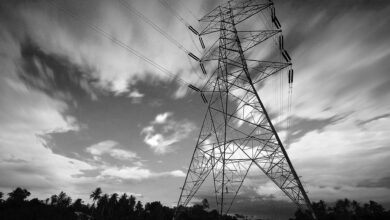
Well Done
Through and a good read. Eye opening.